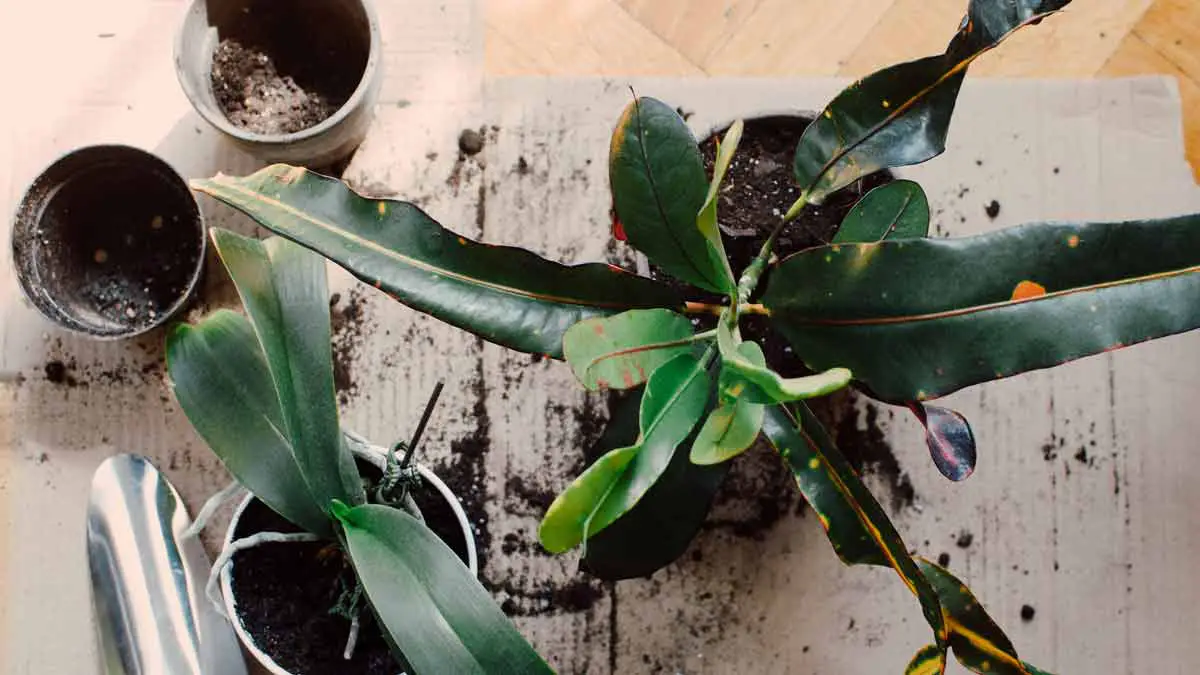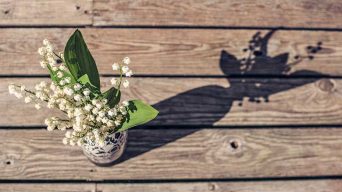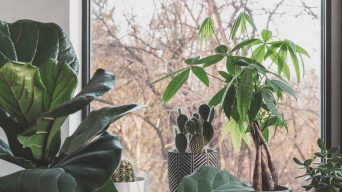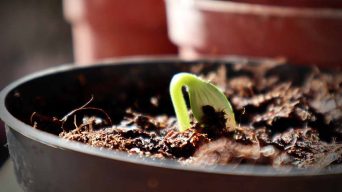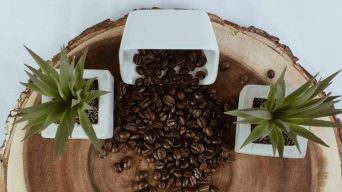Repotting newly bought indoor plants isn’t immediately necessary. Wait a few weeks to acclimate, and repot only if it’s outgrowing or roots are escaping its nursery pot. Repotting every 12-18 months is a general guideline, avoiding stress on the plant.
Should you repot your indoor plants after buying them? Repotting is essential to caring for your plants, but it’s not always necessary.
Indoor plants don’t always need to be repotted when you bring them home from the store.
Most plants you buy from a nursery have enough soil and pot size to support healthy growth. However, there are some situations where repotting can be beneficial.
This article will help you determine whether or not repotting your new plant is necessary.
When Should You Repot New Houseplants?
In most cases, newly purchased houseplants in small or medium-sized pots don’t need to be repotted. They’ll adjust to their new environment over time, and the pot size won’t be an issue.
New plants usually come in the right-sized containers to help them establish a healthy root system and promote growth.
Besides, repotting a plant can be stressful. If the plant is already acclimating to its environment, it’s best not to disturb it.
When a plant is repotted, it can experience shock, which can cause it to become weakened and vulnerable to diseases.
So, when should you repot indoor plants after buying them? Here are some of the most common scenarios:
1. Your New Houseplant Has Outgrown Its Pot
When you buy bigger plants or if your small ones grow quickly, that’s usually a sign that it’s time to repot.
If you notice that the roots are starting to come out of the drainage holes at the bottom of the pot, or if they’re growing up through the soil, it is likely time for a bigger pot.
You should also check on your plant once a month to see if it has outgrown its pot. If the plant looks like it’s beginning to crowd the edges of the container, that’s a good indication that you should repot.
2. Your Plant Needs More Drainage
Drainage is essential for healthy indoor plants. If you recently purchased a houseplant, you should make sure that it has adequate drainage. If not, repotting is a good idea as it will give the roots enough room to breathe and help prevent root rot.
You can also add a layer of rocks or gravel to the bottom of your pot for extra drainage, so that the soil does not become saturated with moisture.
3. Your Plant Needs More Nutrients
If you have had your houseplant for a while and it’s not growing as well as you would like, then you should repot it. Repotting can help provide the plant with more nutrients and help promote healthy growth.
You should also ensure that you are providing the plant with adequate water and sunlight, as these two factors can significantly affect your plant’s health.
4. The Potting Soil Is Old
When you buy a plant in a garden center, it often comes with an old potting mix. If the soil is more than a year old, it’s best to repot plants in fresh soil. This will provide the plant roots with essential nutrients and help promote healthy growth.
You can tell if the soil is too old, if it has a stale smell or if it’s discolored.
When Should You Not Repot New Indoor Plants?
In general, you should not need to repot newly-purchased plants right away.
If you bought a plant in a smaller pot, it might be displayed this way for ease of display and portability. It’s best to wait until the plant is larger and more actively growing before repotting it in a larger pot.
For certain plants, such as succulents and cactus plants, it’s best to wait at least a few weeks before repotting. This allows the plant to adjust to its new environment without enduring another transition.
If you are concerned about the health of your recently bought indoor plants, there are other ways you can help them adjust. Here are a few tips:
- Place the plant in an area with indirect light and temperatures between 60-80°F.
- Water your plants deeply, but not too frequently. Most indoor plants only require water when their soil is dry.
- Prune any damaged or dead foliage. This can help the plant focus its energy on growing healthy new leaves and stems.
- Fertilize your plants if needed. Fertilize your plants if needed. Most houseplants benefit from a light fertilizer application every two weeks during the growing season.
By following these tips, you can help ensure that your new houseplant thrives in its new home without needing to be repotted immediately.
That said, keep an eye on your plant and repot if necessary.
What Are the Benefits of Repotting Indoor Plants?
Repotting can provide several benefits for your houseplants. It can help ensure that the roots get ample growing room, give them access to more nutrients, and allow you to use new soil with improved drainage and aeration.
It’s also an opportunity to check the health of any signs of root damage and identify any pests or diseases that may have affected them.
The root ball of a plant can ultimately tell you a lot about its health and overall well-being, so it’s essential to check on it regularly. Checking if an indoor plant is root-bound is an important part of keeping it healthy and thriving.
A root-bound plant is a common issue that can occur when a plant is left in its pot for too long. This happens when the roots of the plant become so tightly packed that they begin to circle around the inside of the pot, preventing the plant from growing and absorbing
Repotting can also be an excellent way to give your plant an aesthetic boost. If you want to update the look of your houseplant, try repotting it into a new pot with a fresh design.
While repotting is not always necessary for newly purchased plants, keeping an eye on their health is still a good idea. If your houseplant is struggling, repotting may help give it the boost it needs.
Use the right potting mix, provide adequate drainage and nutrients, and check for pests or diseases before repotting.
How To Repot An Indoor Plant
If you decide to repot your houseplant, it’s essential to understand how to do so safely and correctly.
Repotting an indoor plant is relatively easy. You’ll need to ensure that you have the correct pot size and fresh potting soil mix.
Once you have all the materials, follow these steps:
- Gently remove the plant from its old pot and set it in a new pot that is a couple of inches bigger than the previous one.
- Place a few handfuls of fresh potting soil in the bottom of the new pot and gently pack it down to create a stable base.
- Place your plant in the new pot and gently fill in around it with more soil, leaving about an inch of space at the top.
- Don’t water your plant for a few days after repotting, as this will allow the roots to adjust to their new environment.
- When it’s time to water your plants, ensure that the soil is evenly moist and has good drainage.
By following these steps, you should be able to repot your newly purchased plant without any issues.
When Is the Best Time to Repot Houseplants?
The best time to repot is typically in the spring and summer when your houseplant’s growing cycle will be at its peak. During these months, you can take advantage of the warmer temperatures and the additional sunlight.
However, if your plant is showing signs of distress at any time of year, it’s a good idea to repot it immediately. This can give it a fresh start and provide an opportunity to identify any potential issues.
Repotting can be a great way to help your plant adjust to its new home and give it the boost it needs for healthy growth. Be sure to check on your plant regularly and repot if necessary.
Final Thoughts
Repotting houseplants can be beneficial, but it should only be done if necessary.
A new potted plant should be left alone for a few weeks to adjust to its environment before any drastic changes are made.
It’s essential to assess the size of the pot, the type of plant, and the amount of water given to determine if repotting is needed.
Repotting can also help revive a plant that is struggling or not performing as well as it could be.
Overall, repotting plants should be done with caution and only when necessary to ensure the health of your houseplant.
Gardeners should take special care when repotting a houseplant, making sure to use the right soil, pot size, and drainage, as well as providing adequate light and water, in order to ensure a successful transition and a healthy, thriving plant.

